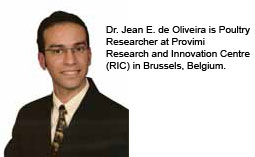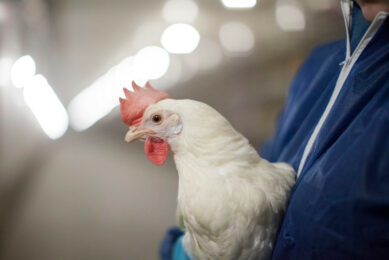In ovo screening of feed additives shows promise

Techniques that expose chick embryos to different compounds are being used in pharmacological and toxicological testing. Now these are being used to identify bioactivity (effects beyond supplying nutrients) of feed ingredients and additives for animal nutrition.
By Jean E. de Oliveira
Chicken embryos are one of the most studied biological organisms. This is due to the fact that these domesticated species have a short gestation period (incubation) that happens outside the mother’s body, making it easy to manipulate and follow. As a consequence, the egg must supply all the nutrients that the embryo will have access to (unless manipulated by in ovo addition) for growth and development. Chicken hatching eggs are readily available and artificial incubation provides an ideal scenario for chicken embryos to become good animal model(s) for moving in vitro observations to in vivo application. This new means of doing research is what we are calling in ovo techniques. Other industry sectors have been taking advantage of in ovo techniques for many purposes like the production of viral vaccines, assessing toxic effects of substances and evaluation of drug delivery systems. In animal production in ovo vaccines are being used for over 15 years and in ovo feeding have been proposed as a way to aid young poultry development.
Application to the feed industry
How can the animal industry improve its capacity to deliver safe, sustainable and economic products to consumers? In practice, searching for alternatives may require a large number of animal trials. Provimi is using in ovo techniques for example to screen a large number of compounds that have bioactivity. Many of these may have limited or no prior information available in feed. In ovo screening procedure involves exposing chicken embryos to compounds and identifying the measurements (biomarkers) on how these affects their development, metabolism and survival. Depending on the nature of the compound or substance, it can be added in different amounts, at different ages and to different egg compartments. Therefore, many compounds can be screened under the same conditions reducing interference of environment, genetics, diet background and season, and above all at reduced time and costs. Compounds identified as being bioactive through this screening are then tested further in feeding trials in different species.
New additives and their claims
There are many feed additives on the market, many based solely on in vitro (lab bench) measurements and little animal or field research to substantiate these claims. In order to replicate in vitro results in vivo, additives must be usually delivered “intact” or active to the gut, or at specific tissues. They are often consumed orally, meaning they have to survive the harsh digestive process. Administration of compounds in ovo into the amnion fluid of chicken eggs allows us to minimise these interfering processes. This is because during late stages of incubation, chick embryos consume their amniotic fluid to hatch, but with limited digestion; and secondly, because there are minimal bacteria presence in the embryo’s intestine during incubation. A compound that proves to be effective in vitro and in ovo but not in vivo (feeding trial) can give insights into what kind of processes (e.g. protected coating) may be necessary to maintain the compound in its active form.
Food safety
Food safety has been a big public concern, especially in Europe, where many new regulatory guidelines have been produced by legislators. At the same time the use of chemical antibiotics have been prohibited, so many natural feed ingredients are tested for their antimicrobial properties. The challenge is to create a consistent test model where infection and clearance can be demonstrated. Through in ovoinoculation of specific pathogens it is possible to create a more consistent mild infection, especially in the lower gut, to produce chicks that can be fed diets with distinct additives that are able to greatly reduce or clear the infection.
Conclusion
As other industries have been doing, the feed sector research can utilise in ovo techniques to narrow the search for new ingredients and additive compounds. This will lead to a new generation of products with proved effectiveness and claims by reducing the gap between in vitro and in vivo proved efficacy.
Source: FeedMix vol 17 nr 1, 2009











